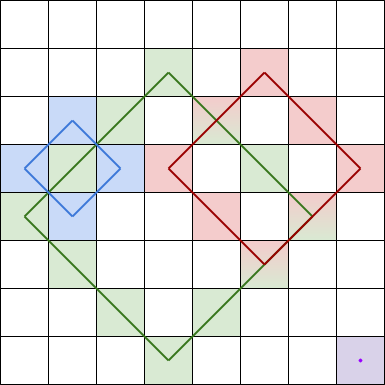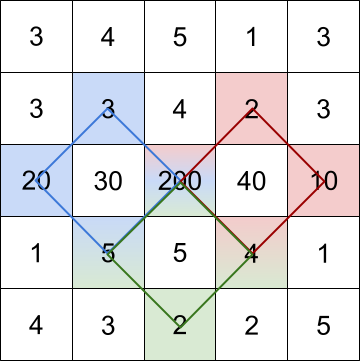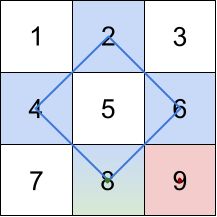Given an integer array nums, your goal is to make all elements in nums equal. To complete one operation, follow these steps:
- Find the largest value in
nums. Let its index bei(0-indexed) and its value belargest. If there are multiple elements with the largest value, pick the smallesti. - Find the next largest value in
numsstrictly smaller thanlargest. Let its value benextLargest. - Reduce
nums[i]tonextLargest.
Return the number of operations to make all elements in nums equal.
Example 1:
Input: nums = [5,1,3] Output: 3 Explanation: It takes 3 operations to make all elements in nums equal: 1. largest = 5 at index 0. nextLargest = 3. Reduce nums[0] to 3. nums = [3,1,3]. 2. largest = 3 at index 0. nextLargest = 1. Reduce nums[0] to 1. nums = [1,1,3]. 3. largest = 3 at index 2. nextLargest = 1. Reduce nums[2] to 1. nums = [1,1,1].
Example 2:
Input: nums = [1,1,1] Output: 0 Explanation: All elements in nums are already equal.
Example 3:
Input: nums = [1,1,2,2,3] Output: 4 Explanation: It takes 4 operations to make all elements in nums equal: 1. largest = 3 at index 4. nextLargest = 2. Reduce nums[4] to 2. nums = [1,1,2,2,2]. 2. largest = 2 at index 2. nextLargest = 1. Reduce nums[2] to 1. nums = [1,1,1,2,2]. 3. largest = 2 at index 3. nextLargest = 1. Reduce nums[3] to 1. nums = [1,1,1,1,2]. 4. largest = 2 at index 4. nextLargest = 1. Reduce nums[4] to 1. nums = [1,1,1,1,1].
Constraints:
1 <= nums.length <= 5 * 1041 <= nums[i] <= 5 * 104
Solution: Math
Input: [5,4,3,2,1]
[5,4,3,2,1] -> [4,4,3,2,1] 5->4, 1 op
[4,4,3,2,1] -> [3,3,3,2,1] 4->3, 2 ops
[3,3,3,2,1] -> [2,2,2,2,1] 3->2, 3 ops
[2,2,2,2,1] -> [1,1,1,1,1] 2->1, 4 ops
total = 1 + 2 + 3 + 4 = 10
Sort the array in reverse order, if we find a number at index i that is is smaller than the previous number, we need i ops to make all the numbers before it to become itself.
Time complexity: O(nlogn)
Space complexity: O(1)
C++
|
1 2 3 4 5 6 7 8 9 10 11 |
// Author: Huahua class Solution { public: int reductionOperations(vector<int>& nums) { sort(rbegin(nums), rend(nums)); int ans = 0; for (int i = 1; i < nums.size(); ++i) if (nums[i] != nums[i - 1]) ans += i; return ans; } }; |


